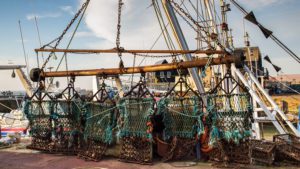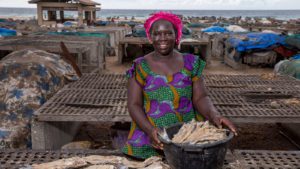Our Shared Seas spoke with Dr. Rosamond Naylor to discuss the current state of the aquaculture industry—and what the next 20 years may look like for the sector.
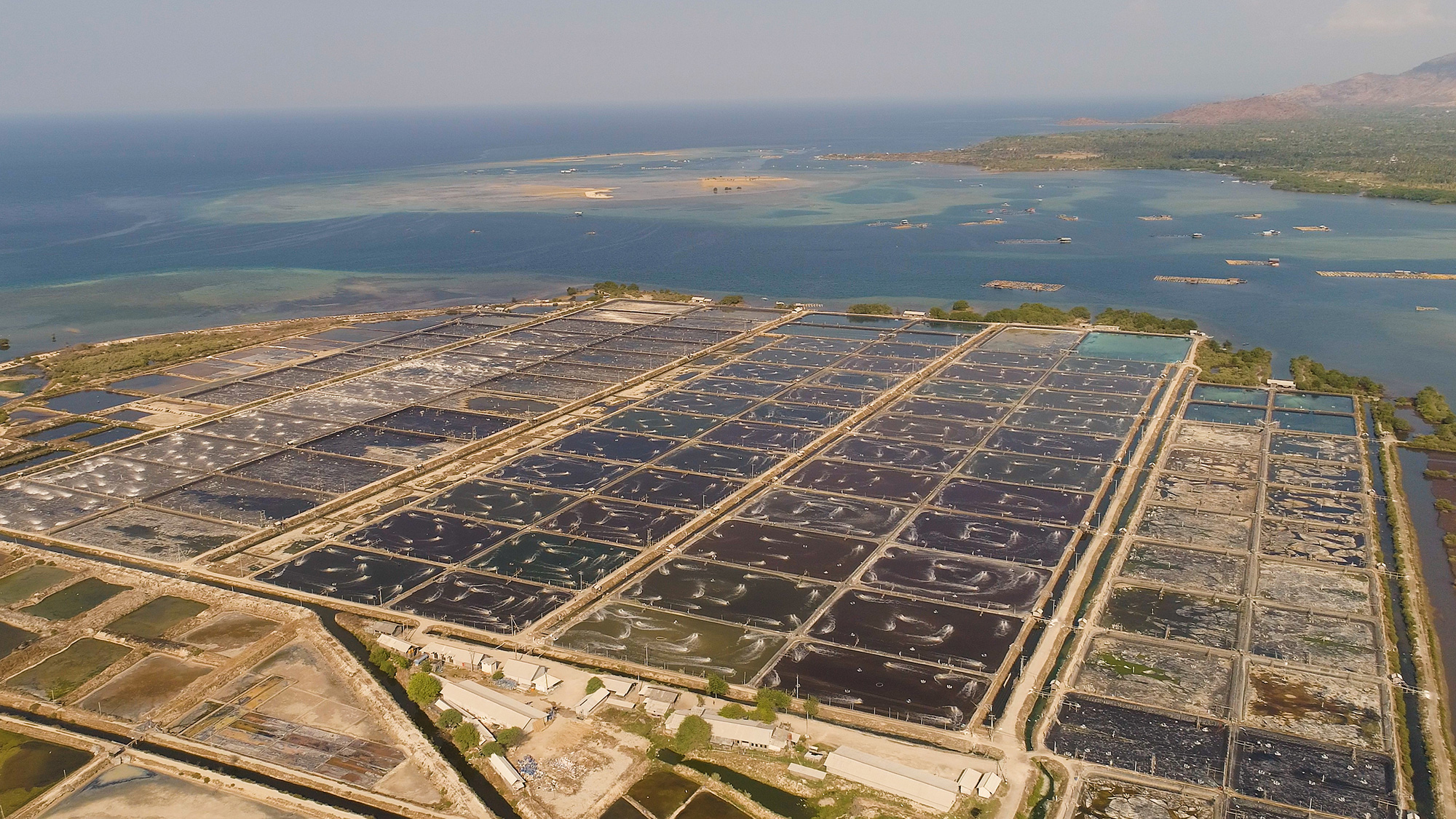
Large-scale shrimp and prawn farm in Indonesia. Photo: iStock/Alexpunker
In 2001, Dr. Rosamond Naylor of Stanford University led a study that pointed to the challenges of the aquaculture sector due to its heavy reliance on wild fish to feed carnivorous farm-raised species. The study led to questioning within the environmental community as to whether the growing aquaculture sector would increase, rather than relieve, pressure on marine fisheries. Over the past 20 years, the volume of global aquaculture production has tripled. Dr. Naylor recently led a 20-year retrospective review of the aquaculture sector to examine its progress and lingering challenges.
In 2021, you co-authored a review in Nature as a retrospective on 20 years of global aquaculture production. The paper shows how aquaculture production has nearly tripled during that time, responsible for more than half of the seafood produced globally. What were some of the key drivers of this growth?
Freshwater inland aquaculture was the big driver for this growth, in my view. Our initial work in 2000 had focused mainly on marine aquaculture, and we were expected to see growth in that area. While the marine aquaculture sector did indeed grow, the sheer volume of freshwater aquaculture really outweighed everything else over the past 20 years. This really surprised us—for many of the co-authors, freshwater aquaculture was not even on our radar as a sector with such considerable expansion.
If you look at a country like Bangladesh, there was enormous growth in freshwater ponds of all sorts of different species. A lot of small and medium size enterprises have numerous small actors all along the supply chain. Our study did not find large industrial aquaculture driving this expansion in growth; it was attributed to smallholders in Asia on freshwater ponds. While tilapia and pangasius were some of the key commodities expanding, there were also a lot of other species—including finfish—farmed in these ponds. This growth, in turn, contributed to food security and livelihoods in rural areas, especially since as much as 90 percent of the product was consumed domestically and not traded.
Stepping back, you also led a study on aquaculture in 2000 which suggested that the aquaculture sector may intensify, rather than reduce, pressure on marine fisheries due to inputs required to feed carnivorous farm-raised fish. In the time between these two studies, how has the marine aquaculture industry changed and how have environmental impacts evolved?
I’d like to think that our initial paper helped drive the industry towards more sustainable practices. It was one of many papers that put the spotlight on aquaculture and said, “We need a more sustainable industry.”
As a whole, the aquaculture sector did strive to adopt more sustainable practices. The feeds and reliance on wild fish are among the biggest costs to aquaculture producers, so a lot of this change was driven by economics. Before we wrote our paper in 2000, fishmeal was relatively inexpensive and was the highest-performing feed at the time, making it a natural choice to use. But as the aquaculture sector expanded, fishmeal increased notably in price. Since 2010, fishmeal has been significantly more expensive than any other plant-based protein by a wide margin. The aquaculture industry reduced its use of fishmeal, both as a sustainability measure but also simply to reduce its costs—by as much as 50 percent of unit area cost. This is why, despite a threefold increase in fed aquaculture, the amount of forage fish captured to produce fish meal and fish oil declined over the past 20 years.
The aquaculture industry reduced its use of fishmeal, both as a sustainability measure but also simply to reduce its costs—by as much as 50 percent of unit area cost. This is why, despite a threefold increase in fed aquaculture, the amount of forage fish captured to produce fish meal and fish oil declined over the past 20 years.
We also saw a transition to circular economy practices as the industry increasingly used fish trimmings as a component in fish meal. For species like tilapia and pangasius that are more omnivorous, they can consume fishmeal that might be made out three-parts trimming and one-part wild fish, so the industry has taken waste and repurposed it as an input.
In parallel, the industry did a lot of breeding and genetic work to enable fish to absorb nutrients from a plant-based feed. Through changes in feeds and genetics, the industry was able to reduce the use of wild fish for feed by 50 percent. That said, the easy gains have now been made, and going forward the next 50 percent will be a more significant challenge.
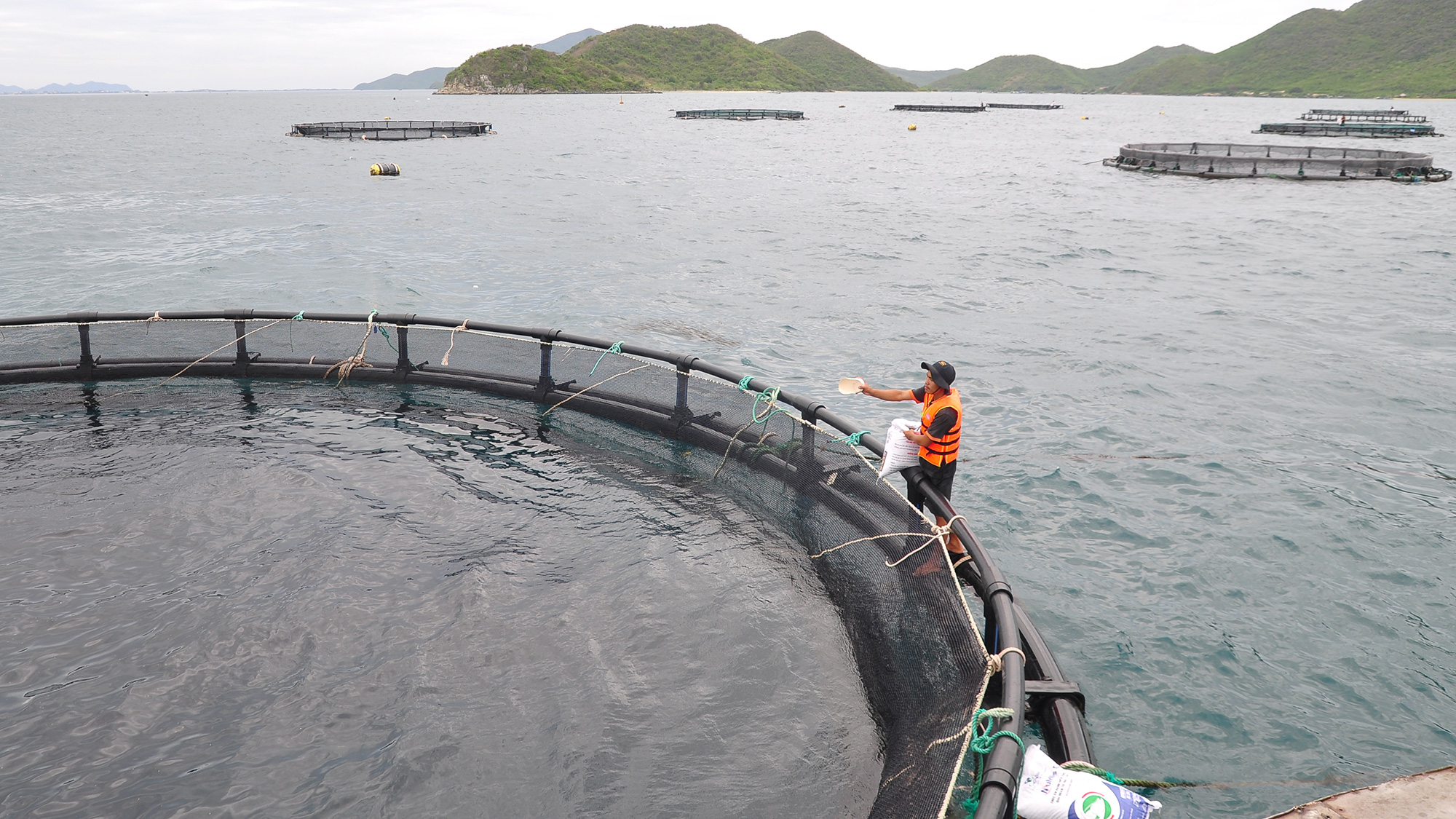
Feeding barramundi fish in Vietnam. Photo: iStock/duybox
The recent paper calls out the importance of freshwater aquaculture, seaweed, and bivalve production as major drivers of aquaculture growth. Yet these trends might seem largely invisible outside of Asia, the largest producer and where 89 percent of that production is consumed within the region. What have been some of the benefits in the growth of these sectors, and are there any drawbacks?
I work in all several different food systems—from agriculture and livestock to fisheries and aquaculture—and they all have environmental impacts. As a system is expanding and intensifying, there will be environmental impacts from nutrient loss and habitat change to the use of resources like land and freshwater. The saying, “there’s no free lunch” applies here.
For freshwater aquaculture, I worry about diseases and the maintenance of fish health. If antibiotics or antimicrobials are used for aquaculture and escape into the environment, then those go out into the human chain. There is concern about environmental impacts as an industry like aquaculture continues to expand, in the same way as with any food system.
Many smallholders practicing freshwater aquaculture do not have a domestic market for sustainable certified product. If 90 percent of this product stays within their country, then we do not see an incentive to take additional precautions. In this case, smallholders will take the most cost-effective approach. We are on a learning curve and face a lot of unknowns as these systems increase in size. For certain countries, like China, we have seen significant quantities of nutrients discharged from freshwater systems that the system cannot be placed in reservoirs or public water bodies. Given that China is the largest freshwater aquaculture producer in the world, its experience provides some indication of potential impacts of an expanding freshwater aquaculture industry.
While we are seeing significant technological developments in the aquaculture industry, sustainability practices must make economic sense for producers to adopt them. A large recirculating aquaculture system on land is really expensive and likely not feasible for a smallholder. This means the industry will continue to face pollution, disease, and habitat issues. The question is, how fast can the industry keep up with the pace of change and scale of impacts?
What would it look like to promote aquaculture growth with a lens of integrating nutrition, equity, justice, and environmental priorities?
I am a co-chair of the Blue Food Assessment, which mapped the role of aquatic foods within the larger global foods system. This assessment fed into the United Nations Food System Summit in September 2021 and explores what it would look like to put aquatic foods on the map with all other foods. The community’s attention right now is focused on the question of how to achieve an environmentally sustainable, nutritious, just and equitable food system. Through this lens, the role of smallholders in aquaculture is critical given their contributions to food security and livelihoods.
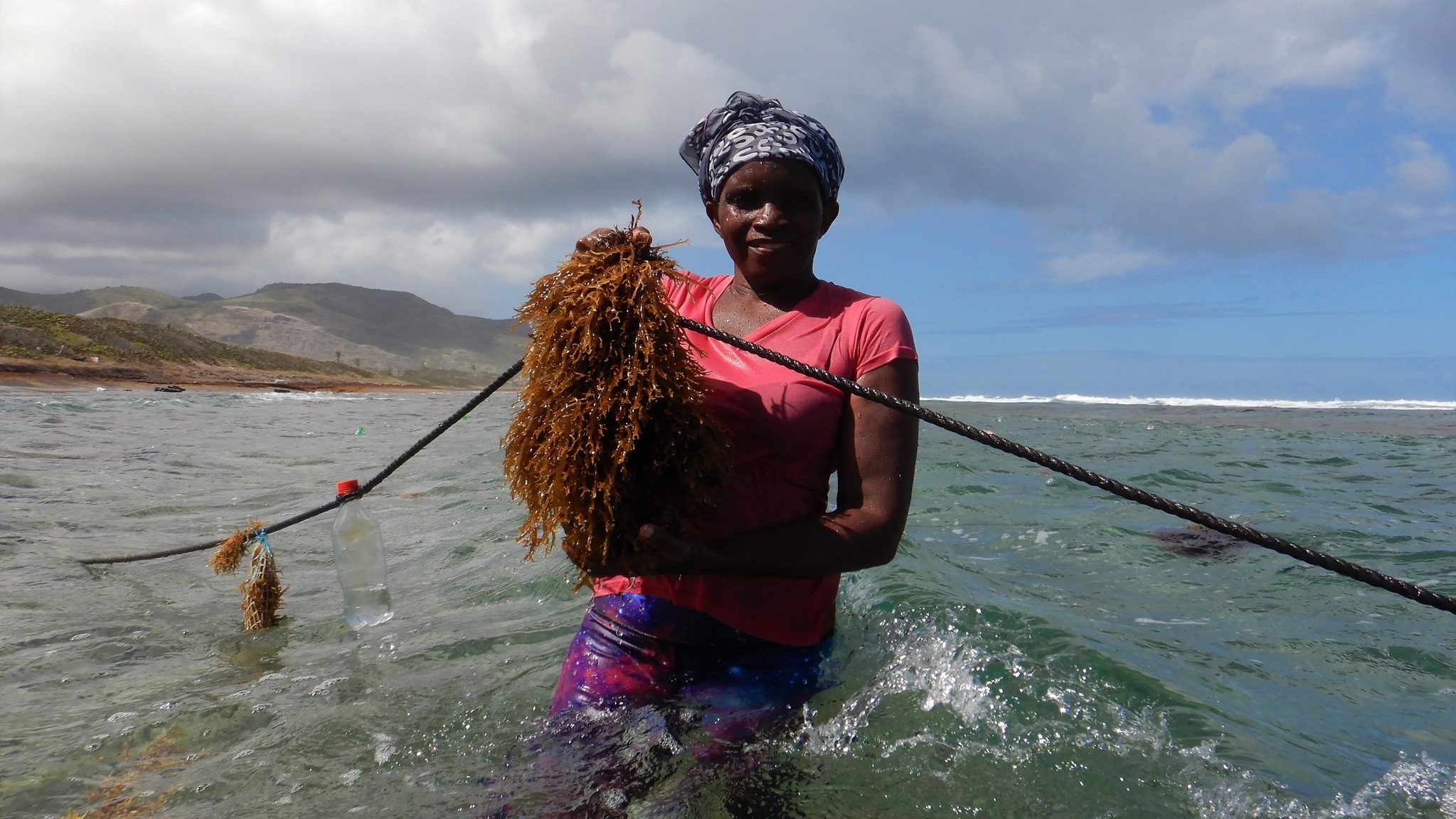
Seamoss farming in St Kitts. Photo: Austin Stankus FAO
The challenge is that global investments in aquaculture have leaned towards higher-value species—like salmon and shrimp—that have benefitted from gains in feed and genetics. If we applied even a fraction of those investments into smallholder aquaculture, we could make significant improvements in the sector’s sustainability.
The challenge is that global investments in aquaculture have leaned towards higher-value species—like salmon and shrimp—that have benefitted from gains in feed and genetics. If we applied even a fraction of those investments into smallholder aquaculture, we could make significant improvements in the sector’s sustainability.
Writ large, what do you think the next 20 years of aquaculture production might look like? Will we continue to see sustained growth? Will the composition of farmed species shift?
Looking ahead, I worry that aquaculture may have a few species—such as salmon, shrimp, tilapia, and pangasius—which dominate the sector, mirroring an industry like the terrestrial crop sector in which rice, wheat, and corn dominate. The advantage for industry is that if you achieve genetic gains with certain species, you can significantly increase production of those species, particularly since scale and efficiency are key drivers of growth. That said, I think it is very important for both the resilience and nutrition of species to pursue a multi-trophic system where smaller species are feeding on a variety of animals and plants within the environment.
The aquaculture industry is at an inflection point right now. There is a lot of ingenuity in the sector, including how we can use algal-based feeds more productively and creatively. Currently, many algal feeds are expensive, so it is an open question as to how we can reduce costs without increasing associated energy demands.
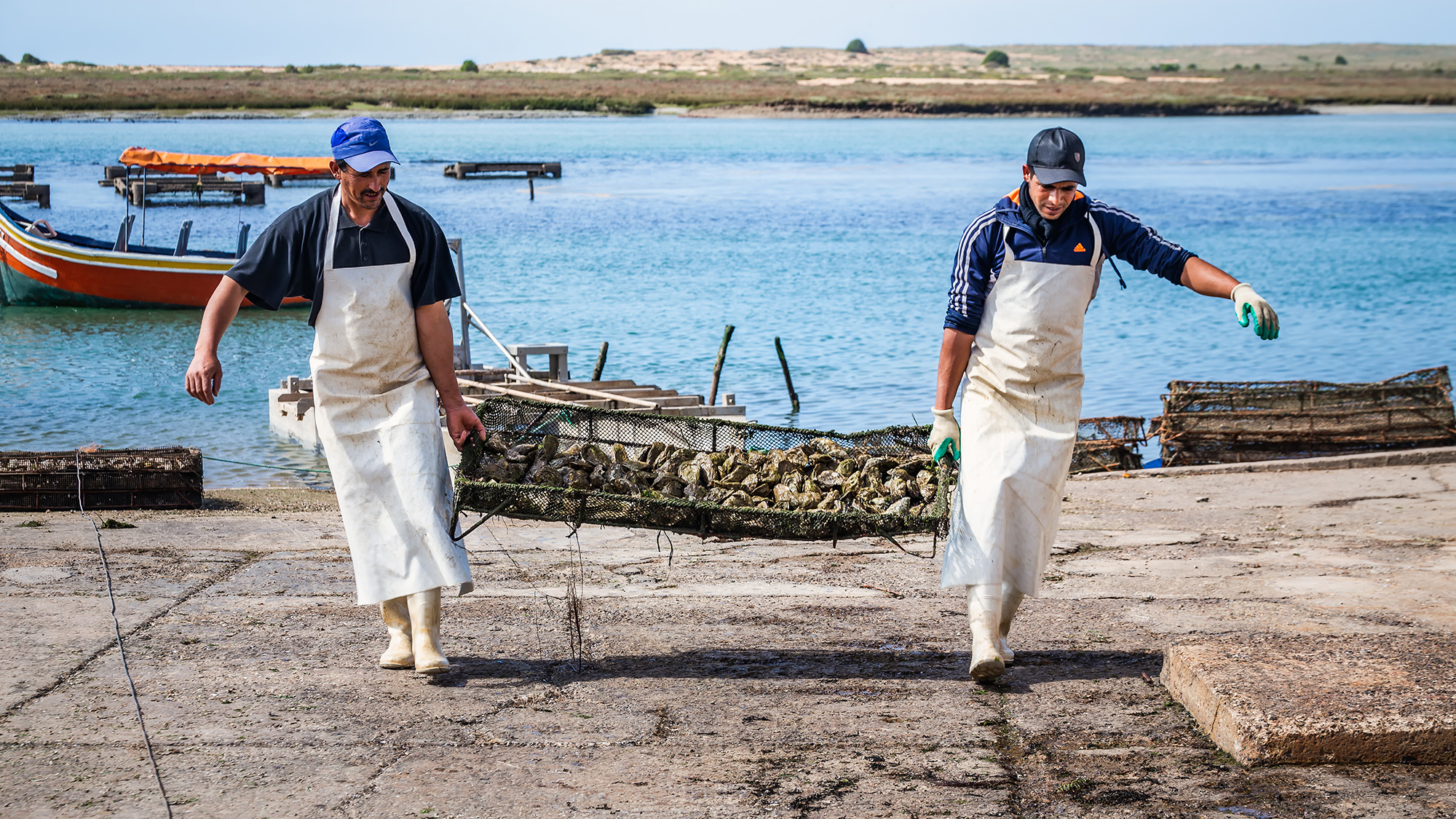
Oyster farming in Morocco. Photo: iStock/RuslanKaln
If I were to forecast 20 years from now, my sense is that we will see lot more recirculating systems on land, an expansion of offshore aquaculture, and a need to navigate other ocean uses such as offshore wind. I think we will see fewer coastal, high-polluting aquaculture enterprises because citizens are generally not in favor of high-polluting industry along the coast. This transition will occur over time; it will not be overnight. The industry is taking a forward-looking approach, and economics will be a key factor in determining what the future of this sector looks like.
The community’s attention right now is focused on the question of how to achieve an environmentally sustainable, nutritious, just and equitable food system. Through this lens, the role of smallholders in aquaculture is critical given their contributions to food security and livelihoods.

